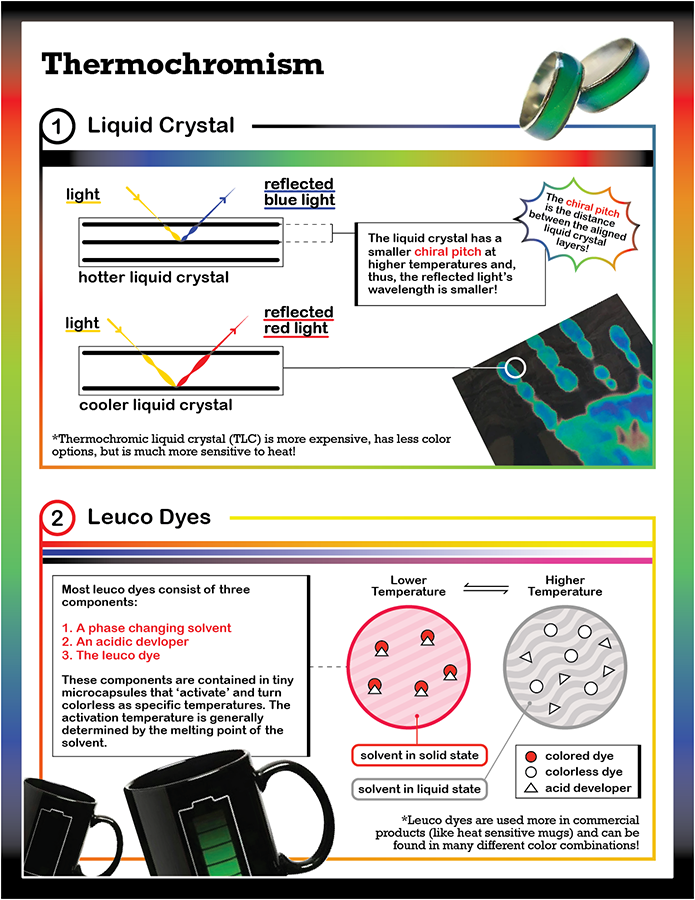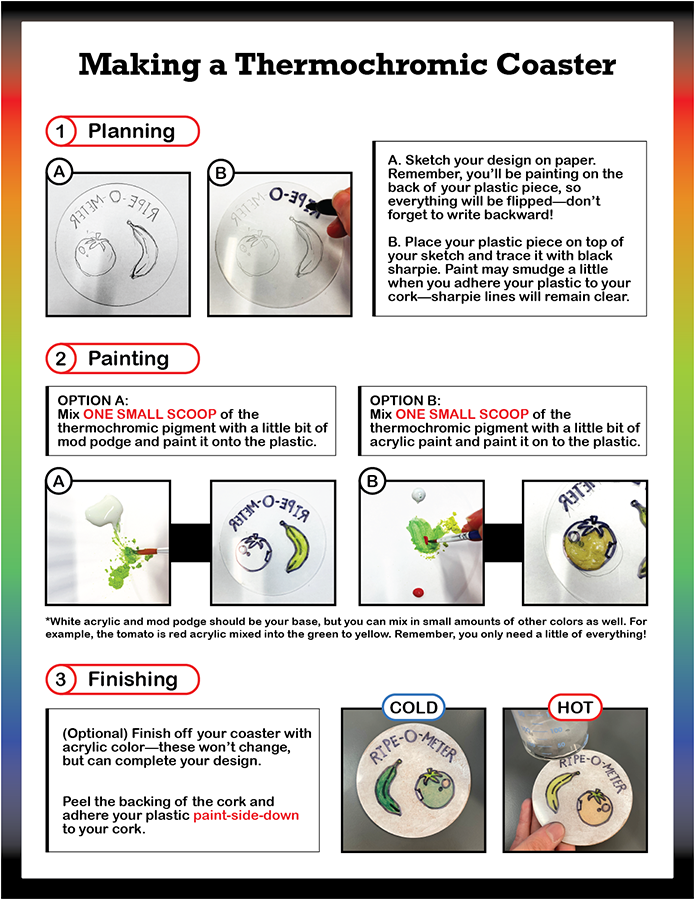Thermochromic Coasters
custom heat reactive coasters using thermochromic dyes
MIT Museum
Collaborator: Yael Saiger
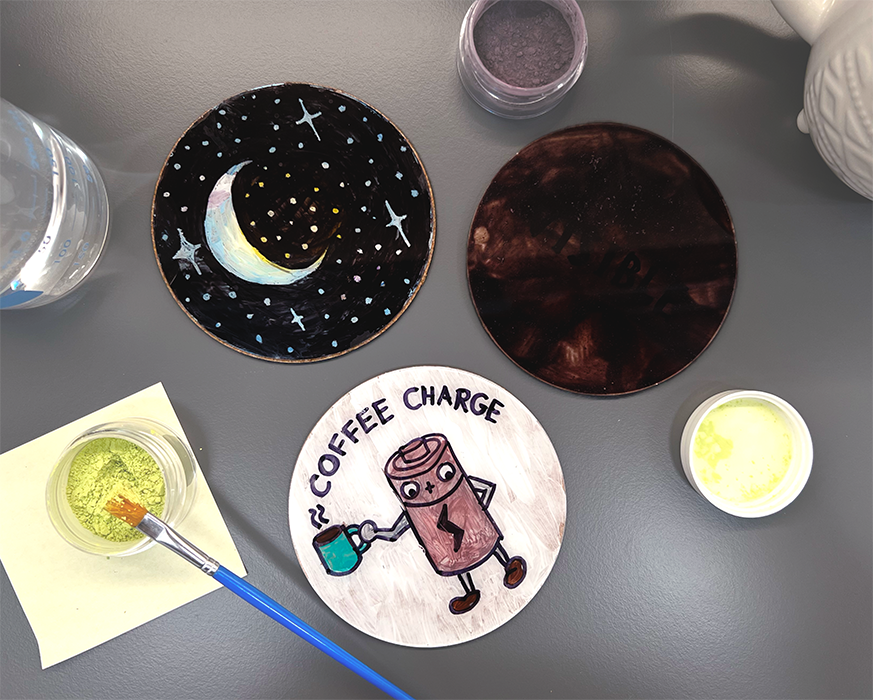
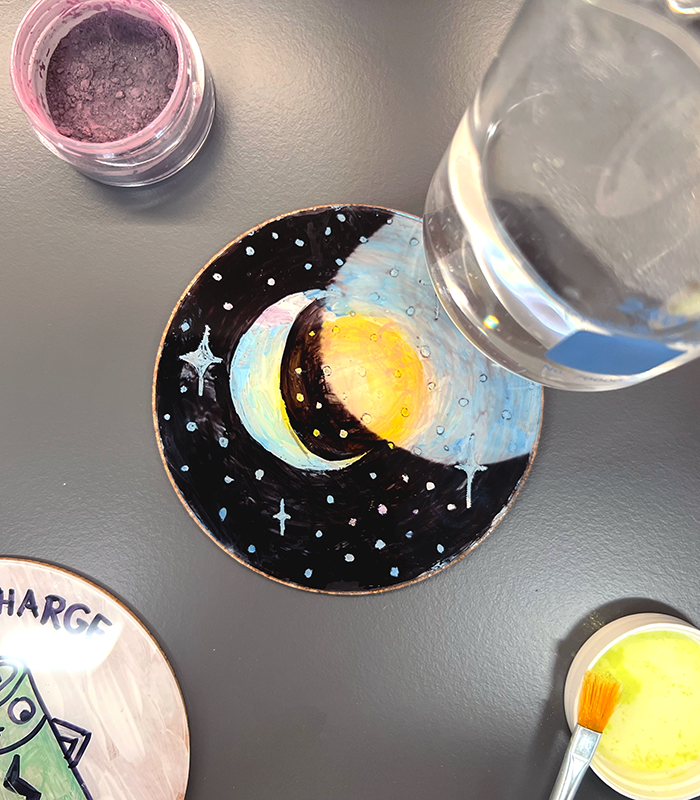
Thermochromism
The deliberate use and understanding of thermochromic materials in a scientific context
developed prominently in the 20th century. In the mid-20th century, researchers began to
investigate and develop thermochromic materials for practical applications, such as temperature
indicators and sensors. Liquid crystal thermometers and displays became commercially available
in the latter half of the 20th century, showcasing the controlled use of thermochromic
properties.
Liquid crystals exhibit alterations in molecular arrangement in response to temperature
variations, leading to changes in their optical properties and perceived color through the
change in structural colors. Structural thermochromism is characterized by modifications in the
physical arrangement of a material, influencing its interaction with light. This can occur
through changes in crystal lattice, molecular organization, or orientation, ultimately causing
shifts in color perception. This phenomenon is widely applied in technologies such as liquid
crystal thermometers, mood rings, and smart windows.
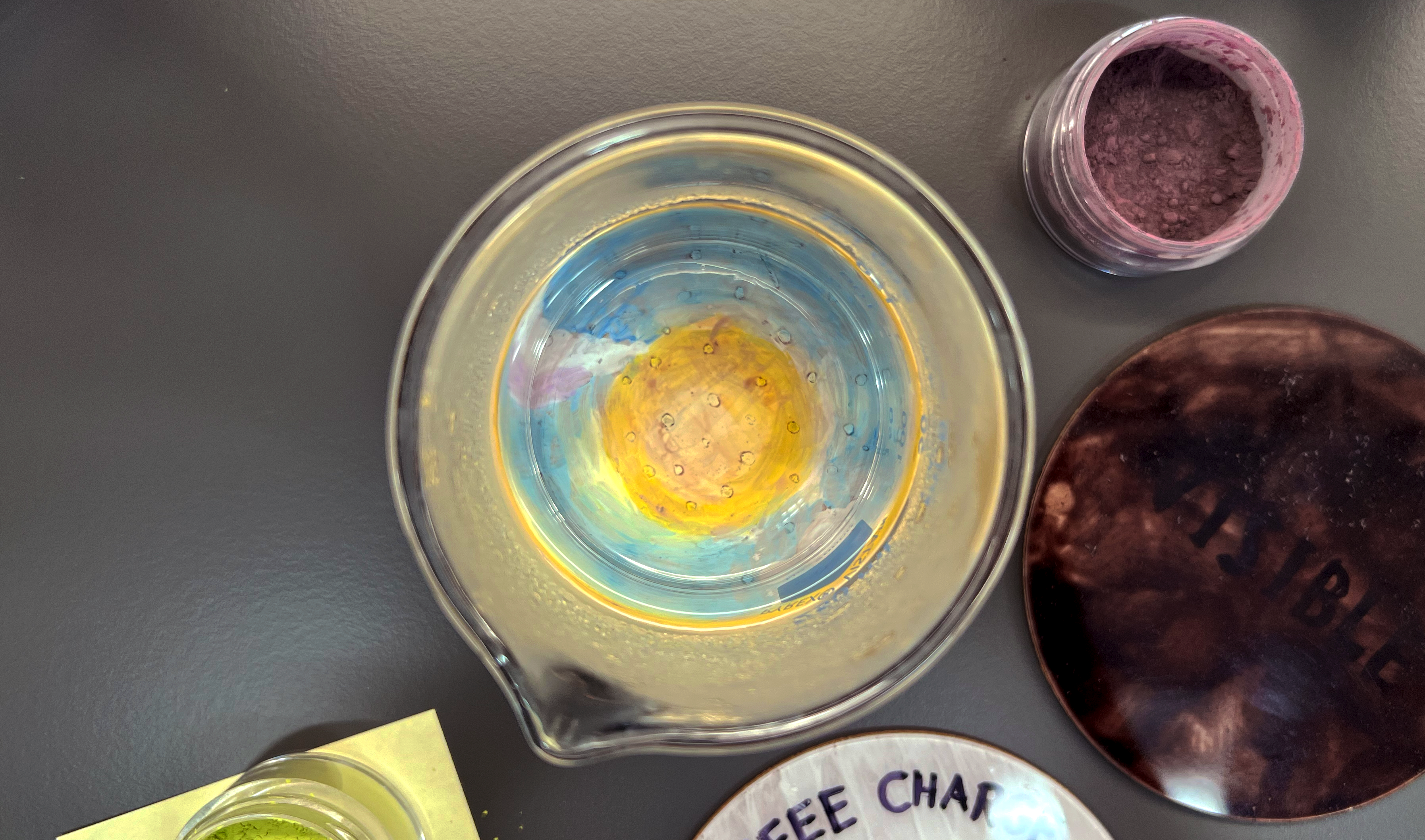
Leuco Dyes
Similarly, thermochromism using leuco dyes involves reversible color changes in response to temperature fluctuations. Leuco dyes, in their colorless state, become transparent but transition to a colored form upon exposure to heat due to a reversible change in pH-levels. Widely applied in inks, coatings, and textiles, these materials find use in products like temperature-sensitive labels and mood-changing fabrics, offering dynamic and interactive visual effects.
Thermochromic Coasters
This activity considers the versatility of mixing leuco dyes to create a spectrum of different thermochromic paints for thermally reactive custom coasters. Participants can add the various thermochromic pigments into paint or a clear adhesive. This paint can be used to decorate their acrylic circles with patterns or images.
